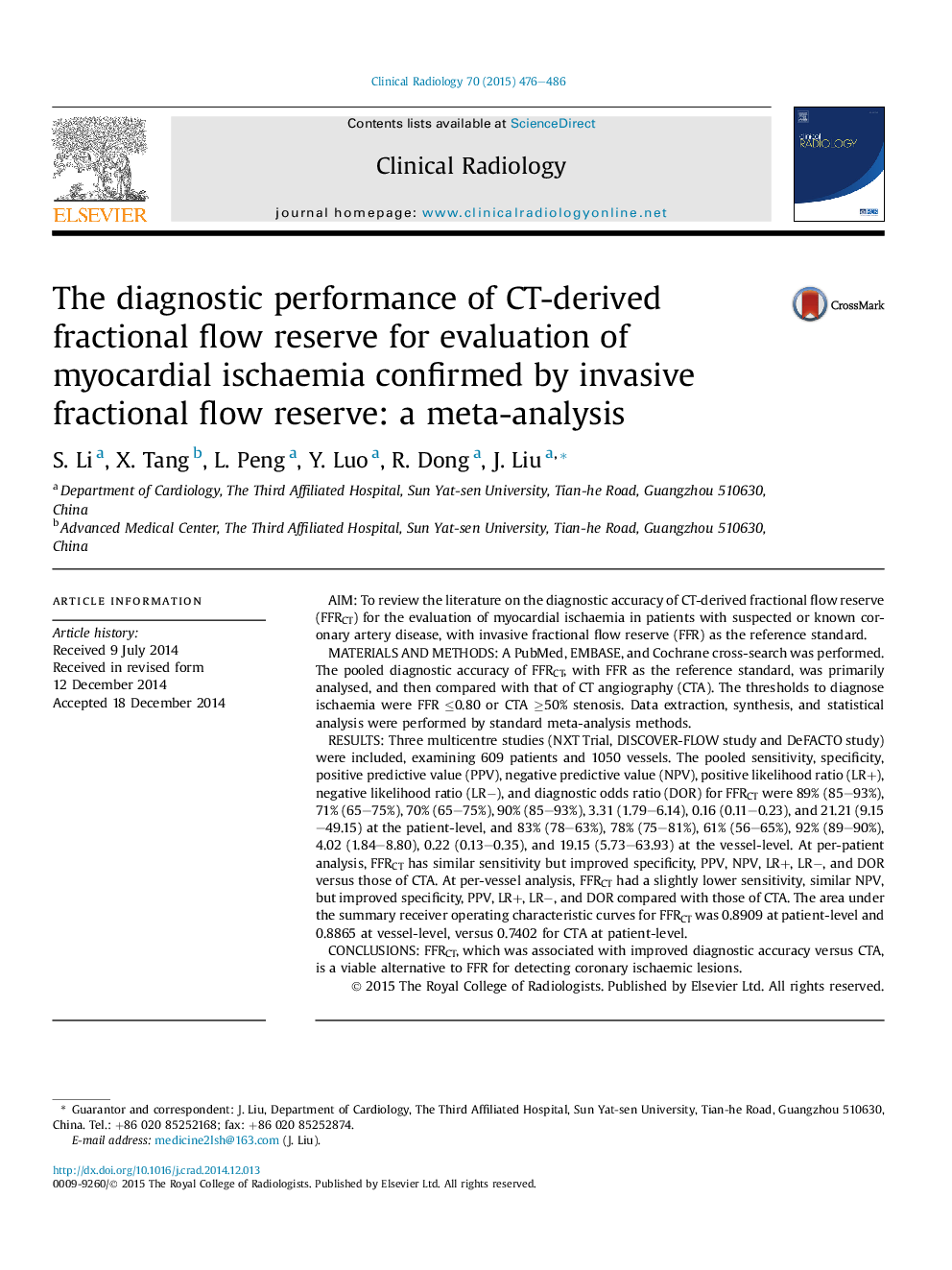| Article ID | Journal | Published Year | Pages | File Type |
|---|---|---|---|---|
| 6190941 | Clinical Radiology | 2015 | 11 Pages |
â¢FFRCT is associated with improved diagnostic accuracy versus computed tomography angiography.â¢FFRCT is a alternative to FFR for detecting ischemic coronary lesions.â¢Heterogeneities exist among trials of FFRCT that should be further studied.
AimTo review the literature on the diagnostic accuracy of CT-derived fractional flow reserve (FFRCT) for the evaluation of myocardial ischaemia in patients with suspected or known coronary artery disease, with invasive fractional flow reserve (FFR) as the reference standard.Materials and methodsA PubMed, EMBASE, and Cochrane cross-search was performed. The pooled diagnostic accuracy of FFRCT, with FFR as the reference standard, was primarily analysed, and then compared with that of CT angiography (CTA). The thresholds to diagnose ischaemia were FFR â¤0.80 or CTA â¥50% stenosis. Data extraction, synthesis, and statistical analysis were performed by standard meta-analysis methods.ResultsThree multicentre studies (NXT Trial, DISCOVER-FLOW study and DeFACTO study) were included, examining 609 patients and 1050 vessels. The pooled sensitivity, specificity, positive predictive value (PPV), negative predictive value (NPV), positive likelihood ratio (LR+), negative likelihood ratio (LRâ), and diagnostic odds ratio (DOR) for FFRCT were 89% (85-93%), 71% (65-75%), 70% (65-75%), 90% (85-93%), 3.31 (1.79-6.14), 0.16 (0.11-0.23), and 21.21 (9.15-49.15) at the patient-level, and 83% (78-63%), 78% (75-81%), 61% (56-65%), 92% (89-90%), 4.02 (1.84-8.80), 0.22 (0.13-0.35), and 19.15 (5.73-63.93) at the vessel-level. At per-patient analysis, FFRCT has similar sensitivity but improved specificity, PPV, NPV, LR+, LRâ, and DOR versus those of CTA. At per-vessel analysis, FFRCT had a slightly lower sensitivity, similar NPV, but improved specificity, PPV, LR+, LRâ, and DOR compared with those of CTA. The area under the summary receiver operating characteristic curves for FFRCT was 0.8909 at patient-level and 0.8865 at vessel-level, versus 0.7402 for CTA at patient-level.ConclusionsFFRCT, which was associated with improved diagnostic accuracy versus CTA, is a viable alternative to FFR for detecting coronary ischaemic lesions.
